Quick filters:
Hypergiant star Stock Photos and Images
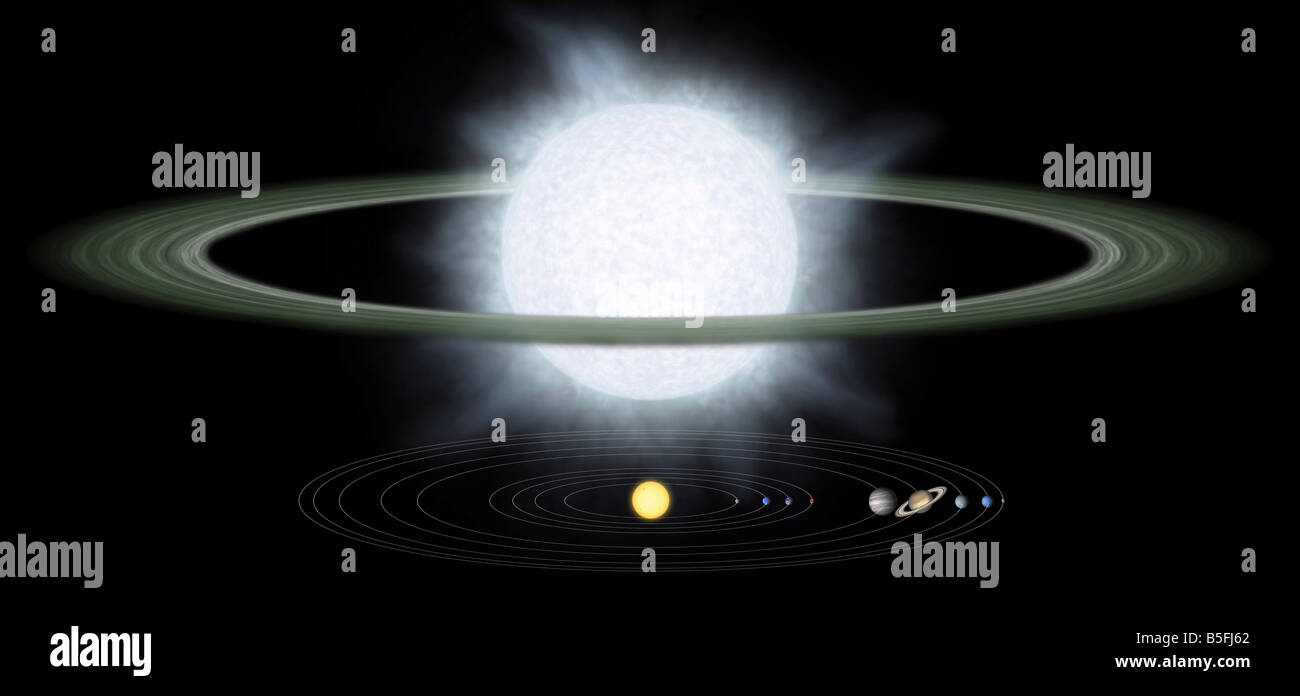 Comparison of the size of a hypergiant star to that of our solar system. Stock Photohttps://www.alamy.com/image-license-details/?v=1https://www.alamy.com/stock-photo-comparison-of-the-size-of-a-hypergiant-star-to-that-of-our-solar-system-20627210.html
Comparison of the size of a hypergiant star to that of our solar system. Stock Photohttps://www.alamy.com/image-license-details/?v=1https://www.alamy.com/stock-photo-comparison-of-the-size-of-a-hypergiant-star-to-that-of-our-solar-system-20627210.htmlRFB5FJ62–Comparison of the size of a hypergiant star to that of our solar system.
 Hypergiant Star HR 5171 Stock Photohttps://www.alamy.com/image-license-details/?v=1https://www.alamy.com/stock-photo-hypergiant-star-hr-5171-135017303.html
Hypergiant Star HR 5171 Stock Photohttps://www.alamy.com/image-license-details/?v=1https://www.alamy.com/stock-photo-hypergiant-star-hr-5171-135017303.htmlRMHRJFXF–Hypergiant Star HR 5171
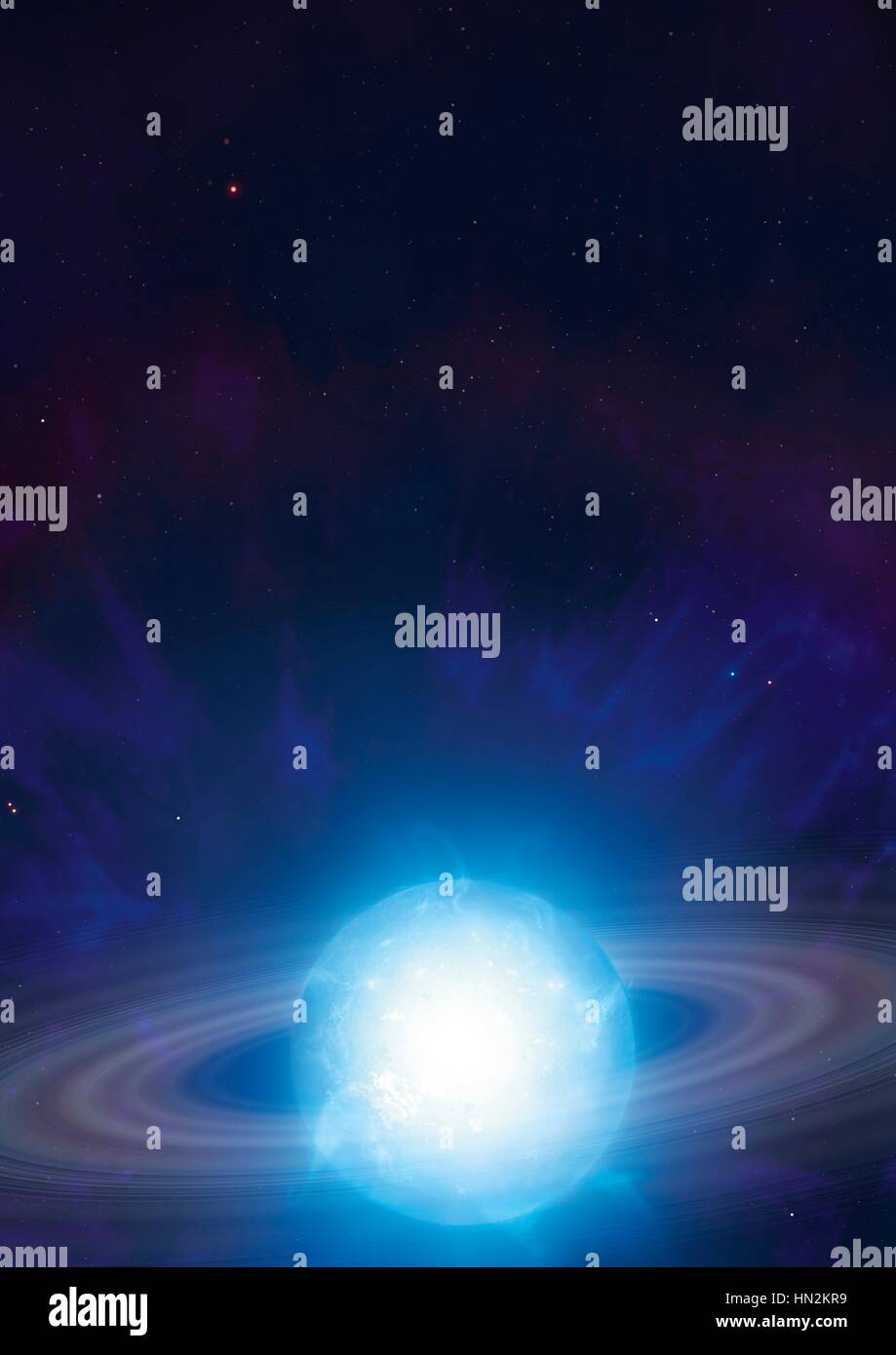 R126 (also known as HD 37974) is hypergiant blue variable star in Large Magellanic Cloud,with unusual features in its spectrum.These features indicate that this massive star seventy times mass of Sun trillions of times more luminous is surrounded by dusty disc.Such discs were thought unlikely around hot stars but R126 shares this trait with another blue giant,HD 268835.The disc is thought to be around 60 times diameter of orbit of Pluto some 0.3 trillion kilometres but it is not known if disc contains newly forming planets or is merely relic from an earlier period of planet formation. Stock Photohttps://www.alamy.com/image-license-details/?v=1https://www.alamy.com/stock-photo-r126-also-known-as-hd-37974-is-hypergiant-blue-variable-star-in-large-133439805.html
R126 (also known as HD 37974) is hypergiant blue variable star in Large Magellanic Cloud,with unusual features in its spectrum.These features indicate that this massive star seventy times mass of Sun trillions of times more luminous is surrounded by dusty disc.Such discs were thought unlikely around hot stars but R126 shares this trait with another blue giant,HD 268835.The disc is thought to be around 60 times diameter of orbit of Pluto some 0.3 trillion kilometres but it is not known if disc contains newly forming planets or is merely relic from an earlier period of planet formation. Stock Photohttps://www.alamy.com/image-license-details/?v=1https://www.alamy.com/stock-photo-r126-also-known-as-hd-37974-is-hypergiant-blue-variable-star-in-large-133439805.htmlRFHN2KR9–R126 (also known as HD 37974) is hypergiant blue variable star in Large Magellanic Cloud,with unusual features in its spectrum.These features indicate that this massive star seventy times mass of Sun trillions of times more luminous is surrounded by dusty disc.Such discs were thought unlikely around hot stars but R126 shares this trait with another blue giant,HD 268835.The disc is thought to be around 60 times diameter of orbit of Pluto some 0.3 trillion kilometres but it is not known if disc contains newly forming planets or is merely relic from an earlier period of planet formation.
 Artist's concept of a Hypergiant Star. Stock Photohttps://www.alamy.com/image-license-details/?v=1https://www.alamy.com/stock-photo-artists-concept-of-a-hypergiant-star-34444803.html
Artist's concept of a Hypergiant Star. Stock Photohttps://www.alamy.com/image-license-details/?v=1https://www.alamy.com/stock-photo-artists-concept-of-a-hypergiant-star-34444803.htmlRFC012KF–Artist's concept of a Hypergiant Star.
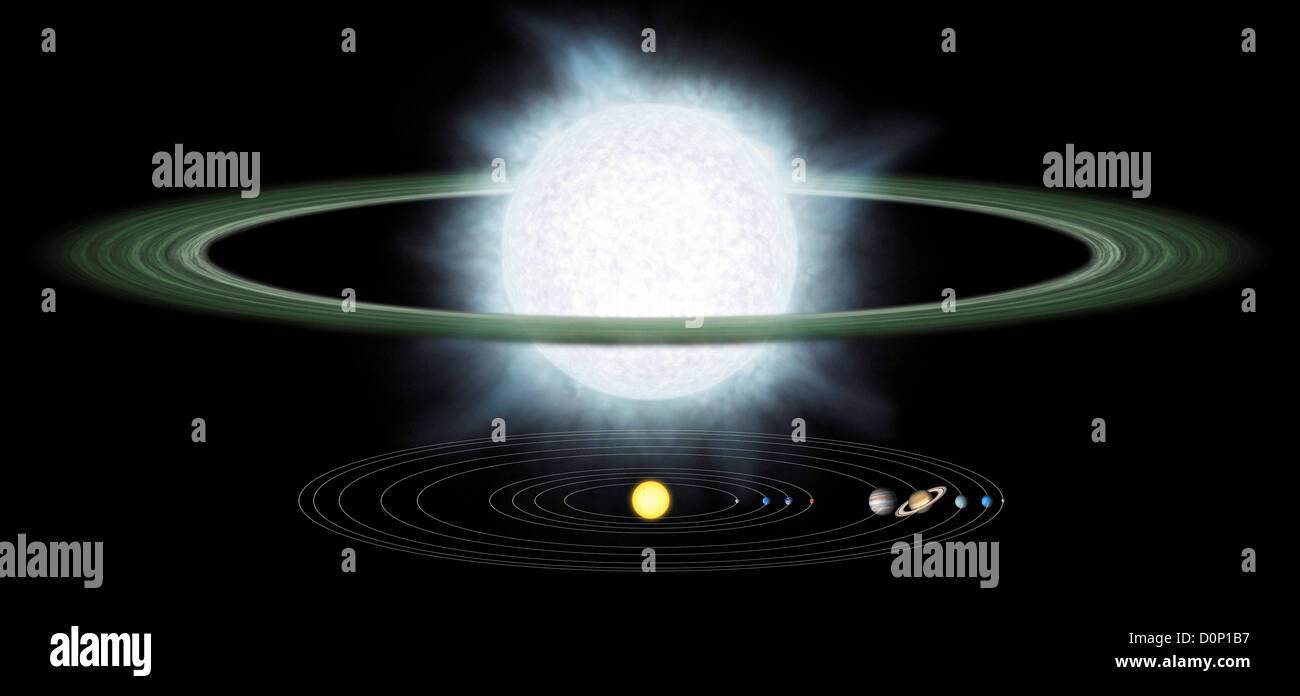 Disk Around Hypergiant Star Stock Photohttps://www.alamy.com/image-license-details/?v=1https://www.alamy.com/stock-photo-disk-around-hypergiant-star-52115147.html
Disk Around Hypergiant Star Stock Photohttps://www.alamy.com/image-license-details/?v=1https://www.alamy.com/stock-photo-disk-around-hypergiant-star-52115147.htmlRMD0P1B7–Disk Around Hypergiant Star
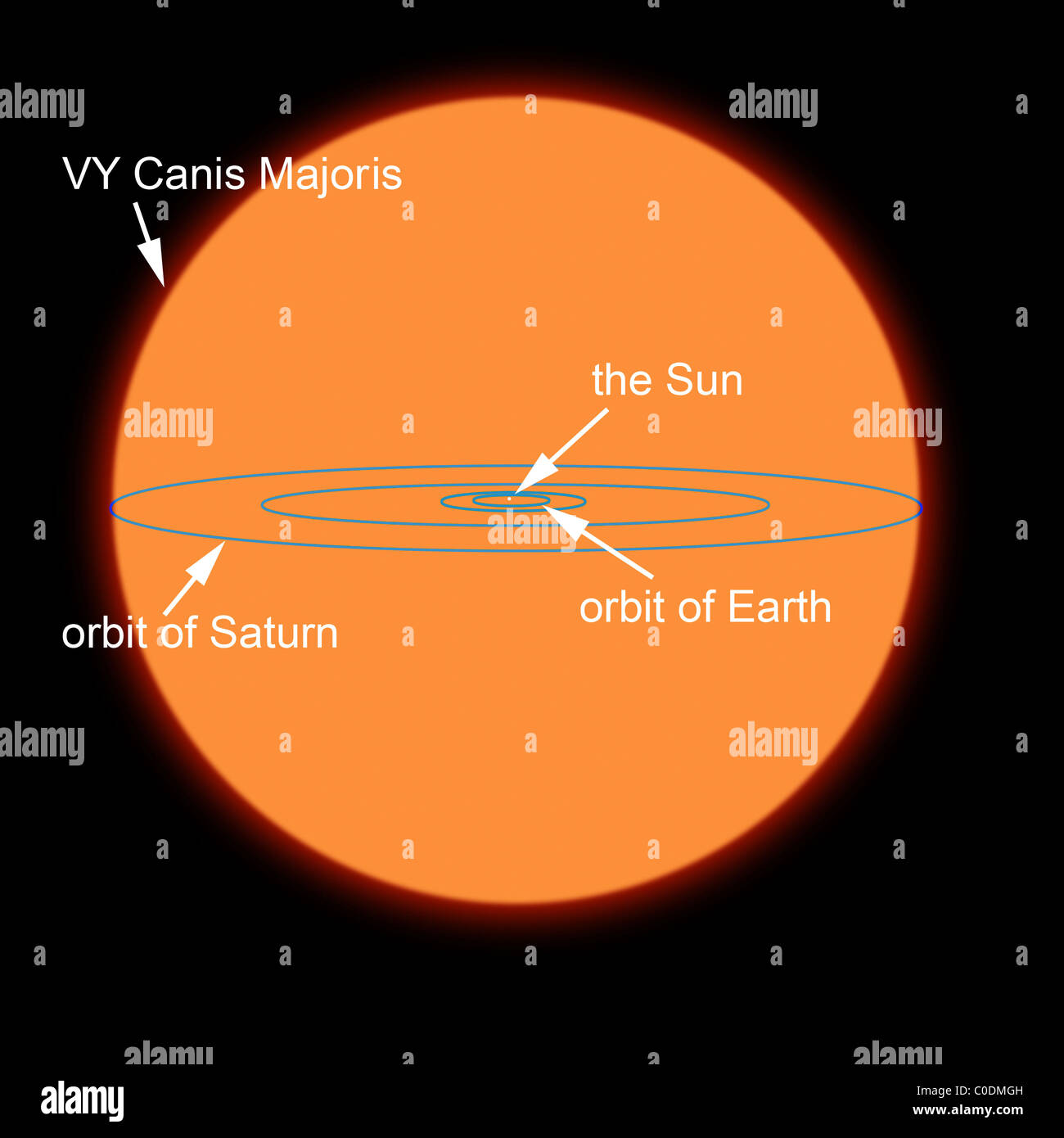 A diagram comparing the Sun to VY Canis Majoris, the largest known star. Stock Photohttps://www.alamy.com/image-license-details/?v=1https://www.alamy.com/stock-photo-a-diagram-comparing-the-sun-to-vy-canis-majoris-the-largest-known-34722257.html
A diagram comparing the Sun to VY Canis Majoris, the largest known star. Stock Photohttps://www.alamy.com/image-license-details/?v=1https://www.alamy.com/stock-photo-a-diagram-comparing-the-sun-to-vy-canis-majoris-the-largest-known-34722257.htmlRFC0DMGH–A diagram comparing the Sun to VY Canis Majoris, the largest known star.
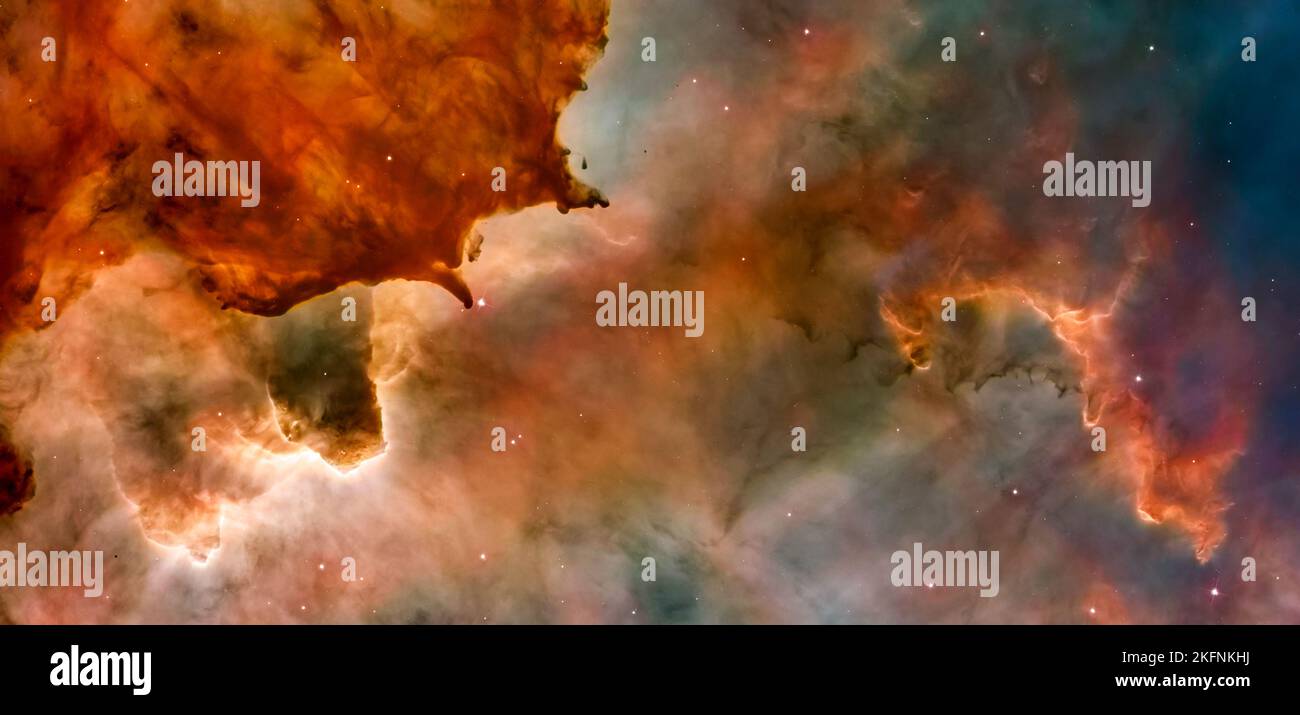 Carina Nebula Clouds by James Webb Space Telescope in panorama. Elements of this image are furnished by NASA. Stock Photohttps://www.alamy.com/image-license-details/?v=1https://www.alamy.com/carina-nebula-clouds-by-james-webb-space-telescope-in-panorama-elements-of-this-image-are-furnished-by-nasa-image491586526.html
Carina Nebula Clouds by James Webb Space Telescope in panorama. Elements of this image are furnished by NASA. Stock Photohttps://www.alamy.com/image-license-details/?v=1https://www.alamy.com/carina-nebula-clouds-by-james-webb-space-telescope-in-panorama-elements-of-this-image-are-furnished-by-nasa-image491586526.htmlRF2KFNKHJ–Carina Nebula Clouds by James Webb Space Telescope in panorama. Elements of this image are furnished by NASA.
 Carina Nebula Star-Forming Pillars. Stock Photohttps://www.alamy.com/image-license-details/?v=1https://www.alamy.com/stock-photo-carina-nebula-star-forming-pillars-57539248.html
Carina Nebula Star-Forming Pillars. Stock Photohttps://www.alamy.com/image-license-details/?v=1https://www.alamy.com/stock-photo-carina-nebula-star-forming-pillars-57539248.htmlRFD9H3W4–Carina Nebula Star-Forming Pillars.
 Eta Carinae is one of the most massive and brightest stars in the Milky Way. Compared to our own Sun, it is about 100 times as massive and a million times as bright. This famed variable hypergiant star (upper center) is surrounded by the Carina Nebula. In this composite image spanning the visible and infrared parts of the spectrum, areas that appear blue are not obscured by dust, while areas that appear red are hidden behind dark clouds of dust in visible light. A study combining X-ray and Infrared observations has revealed a new population of massive stars lurking in regions of the nebula tha Stock Photohttps://www.alamy.com/image-license-details/?v=1https://www.alamy.com/stock-image-eta-carinae-is-one-of-the-most-massive-and-brightest-stars-in-the-169436559.html
Eta Carinae is one of the most massive and brightest stars in the Milky Way. Compared to our own Sun, it is about 100 times as massive and a million times as bright. This famed variable hypergiant star (upper center) is surrounded by the Carina Nebula. In this composite image spanning the visible and infrared parts of the spectrum, areas that appear blue are not obscured by dust, while areas that appear red are hidden behind dark clouds of dust in visible light. A study combining X-ray and Infrared observations has revealed a new population of massive stars lurking in regions of the nebula tha Stock Photohttps://www.alamy.com/image-license-details/?v=1https://www.alamy.com/stock-image-eta-carinae-is-one-of-the-most-massive-and-brightest-stars-in-the-169436559.htmlRMKRJE1K–Eta Carinae is one of the most massive and brightest stars in the Milky Way. Compared to our own Sun, it is about 100 times as massive and a million times as bright. This famed variable hypergiant star (upper center) is surrounded by the Carina Nebula. In this composite image spanning the visible and infrared parts of the spectrum, areas that appear blue are not obscured by dust, while areas that appear red are hidden behind dark clouds of dust in visible light. A study combining X-ray and Infrared observations has revealed a new population of massive stars lurking in regions of the nebula tha
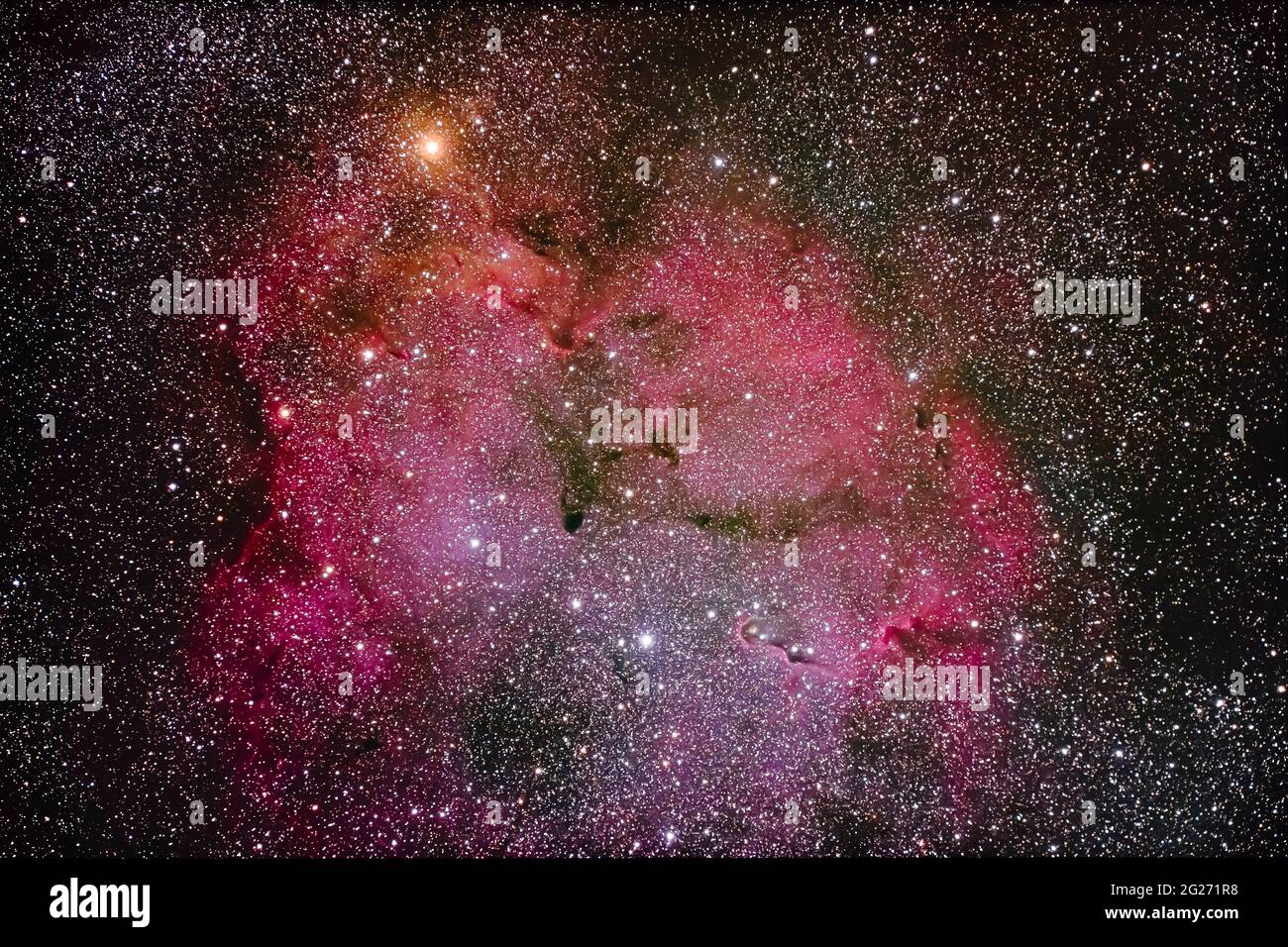 Emission nebula IC 1396 in Cepheus with the orange Garnet Star at top and Elephant Trunk Nebula at bottom. Stock Photohttps://www.alamy.com/image-license-details/?v=1https://www.alamy.com/emission-nebula-ic-1396-in-cepheus-with-the-orange-garnet-star-at-top-and-elephant-trunk-nebula-at-bottom-image431643612.html
Emission nebula IC 1396 in Cepheus with the orange Garnet Star at top and Elephant Trunk Nebula at bottom. Stock Photohttps://www.alamy.com/image-license-details/?v=1https://www.alamy.com/emission-nebula-ic-1396-in-cepheus-with-the-orange-garnet-star-at-top-and-elephant-trunk-nebula-at-bottom-image431643612.htmlRF2G271R8–Emission nebula IC 1396 in Cepheus with the orange Garnet Star at top and Elephant Trunk Nebula at bottom.
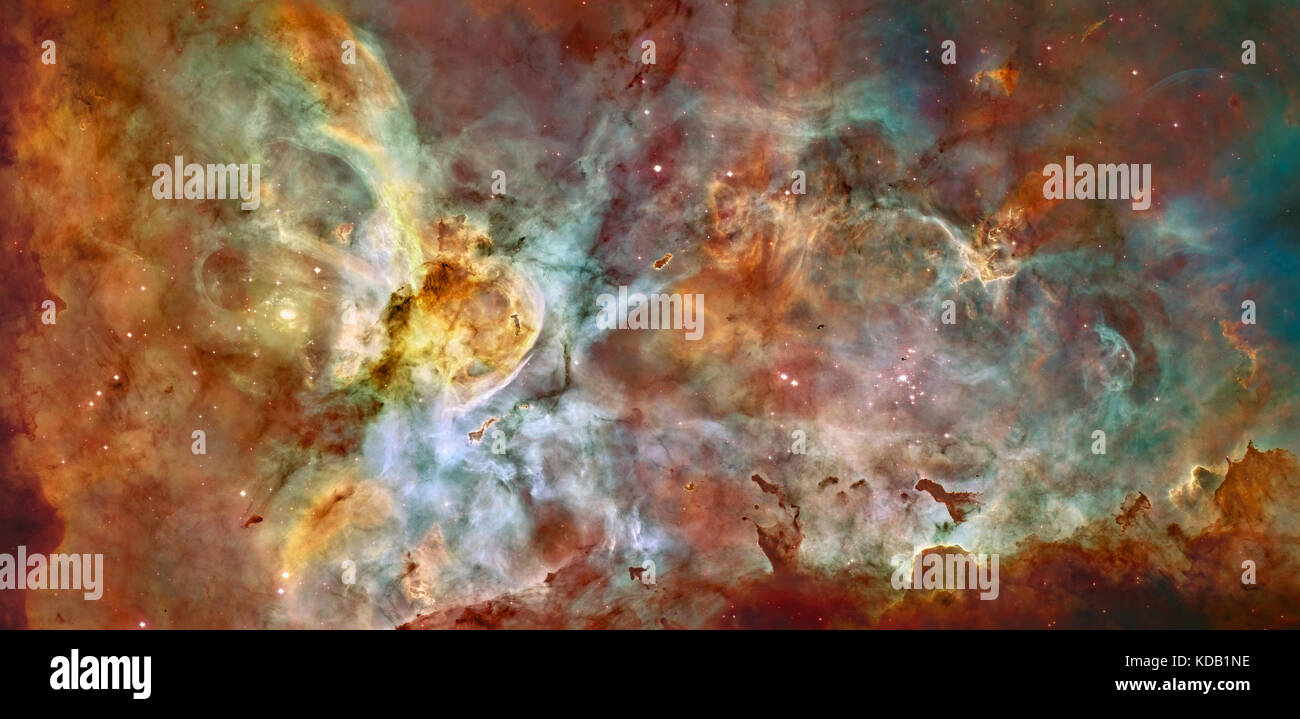 Eta Carinae Nebula in the constellation Carina, located in the Carina–Sagittarius Arm. Elements of this image furnished by NASA. Stock Photohttps://www.alamy.com/image-license-details/?v=1https://www.alamy.com/stock-image-eta-carinae-nebula-in-the-constellation-carina-located-in-the-carinasagittarius-163126698.html
Eta Carinae Nebula in the constellation Carina, located in the Carina–Sagittarius Arm. Elements of this image furnished by NASA. Stock Photohttps://www.alamy.com/image-license-details/?v=1https://www.alamy.com/stock-image-eta-carinae-nebula-in-the-constellation-carina-located-in-the-carinasagittarius-163126698.htmlRFKDB1NE–Eta Carinae Nebula in the constellation Carina, located in the Carina–Sagittarius Arm. Elements of this image furnished by NASA.
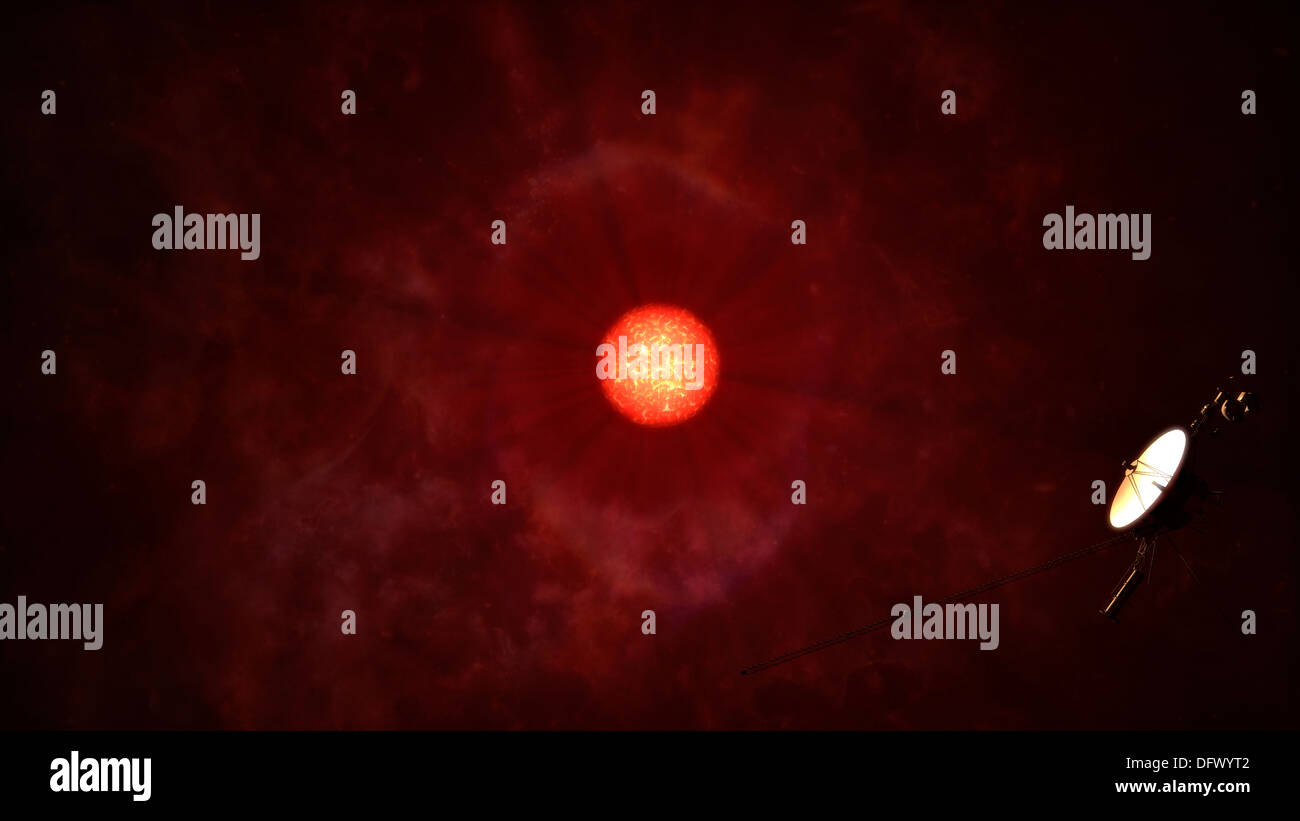 View from Voyager 1 if our Sun were replaced by VY Canis Majoris, the largest known star. Stock Photohttps://www.alamy.com/image-license-details/?v=1https://www.alamy.com/view-from-voyager-1-if-our-sun-were-replaced-by-vy-canis-majoris-the-image61421586.html
View from Voyager 1 if our Sun were replaced by VY Canis Majoris, the largest known star. Stock Photohttps://www.alamy.com/image-license-details/?v=1https://www.alamy.com/view-from-voyager-1-if-our-sun-were-replaced-by-vy-canis-majoris-the-image61421586.htmlRFDFWYT2–View from Voyager 1 if our Sun were replaced by VY Canis Majoris, the largest known star.
 Subgiant star, vector illustration of space Stock Vectorhttps://www.alamy.com/image-license-details/?v=1https://www.alamy.com/subgiant-star-vector-illustration-of-space-image417341930.html
Subgiant star, vector illustration of space Stock Vectorhttps://www.alamy.com/image-license-details/?v=1https://www.alamy.com/subgiant-star-vector-illustration-of-space-image417341930.htmlRF2F6YFTX–Subgiant star, vector illustration of space
 A panorama of the northern summer Milky Way from Cepheus at left, to Cygnus at centre and at right. Stock Photohttps://www.alamy.com/image-license-details/?v=1https://www.alamy.com/a-panorama-of-the-northern-summer-milky-way-from-cepheus-at-left-to-cygnus-at-centre-and-at-right-image635965273.html
A panorama of the northern summer Milky Way from Cepheus at left, to Cygnus at centre and at right. Stock Photohttps://www.alamy.com/image-license-details/?v=1https://www.alamy.com/a-panorama-of-the-northern-summer-milky-way-from-cepheus-at-left-to-cygnus-at-centre-and-at-right-image635965273.htmlRF2YXJM5D–A panorama of the northern summer Milky Way from Cepheus at left, to Cygnus at centre and at right.
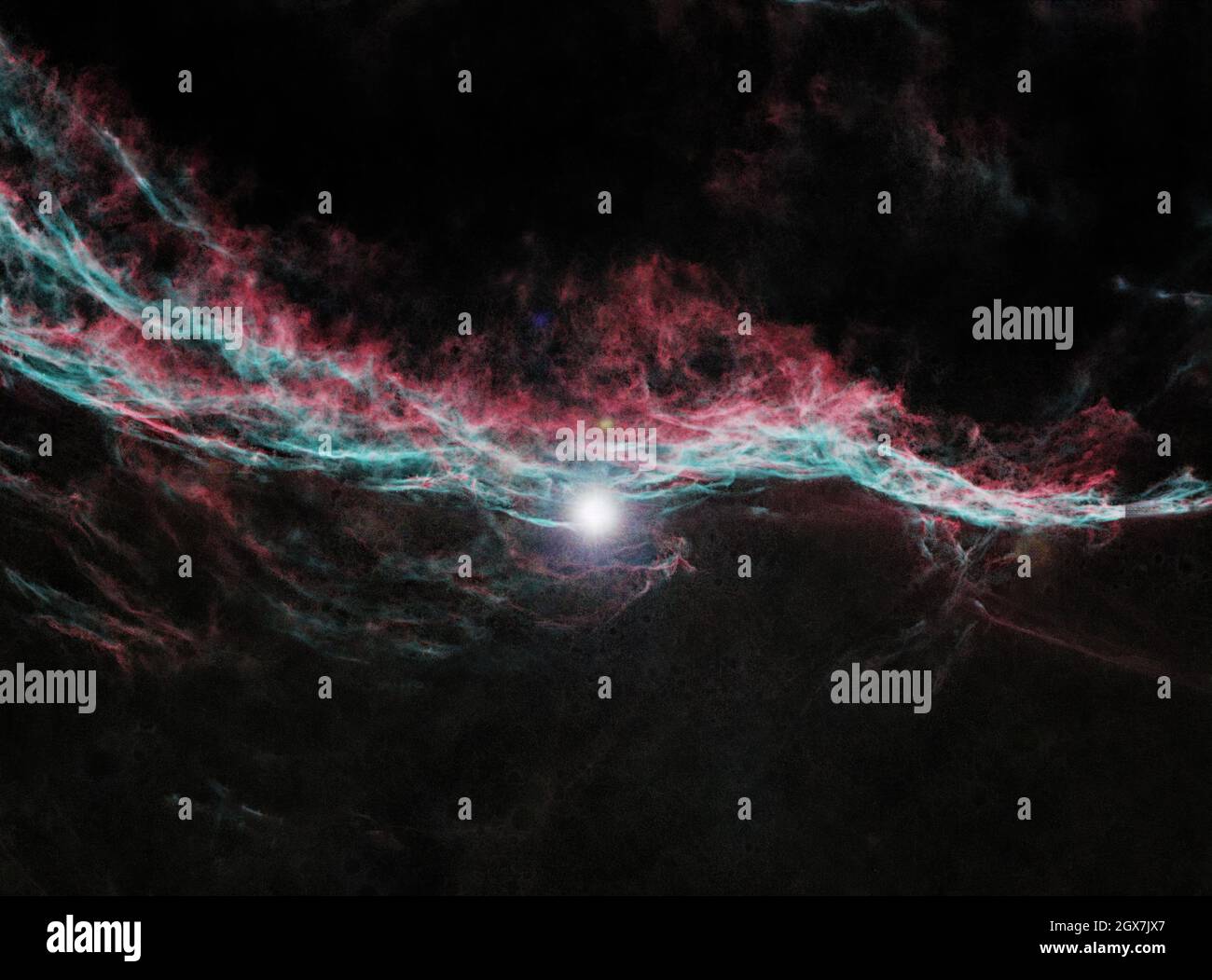 The Vela supernova remnant is a source Type II supernova that exploded approximately 11,000–12,300 years ago. Stock Photohttps://www.alamy.com/image-license-details/?v=1https://www.alamy.com/the-vela-supernova-remnant-is-a-source-type-ii-supernova-that-exploded-approximately-1100012300-years-ago-image446408767.html
The Vela supernova remnant is a source Type II supernova that exploded approximately 11,000–12,300 years ago. Stock Photohttps://www.alamy.com/image-license-details/?v=1https://www.alamy.com/the-vela-supernova-remnant-is-a-source-type-ii-supernova-that-exploded-approximately-1100012300-years-ago-image446408767.htmlRF2GX7JX7–The Vela supernova remnant is a source Type II supernova that exploded approximately 11,000–12,300 years ago.
 Supergiant star, vector illustration of space Stock Vectorhttps://www.alamy.com/image-license-details/?v=1https://www.alamy.com/supergiant-star-vector-illustration-of-space-image417342083.html
Supergiant star, vector illustration of space Stock Vectorhttps://www.alamy.com/image-license-details/?v=1https://www.alamy.com/supergiant-star-vector-illustration-of-space-image417342083.htmlRF2F6YG2B–Supergiant star, vector illustration of space
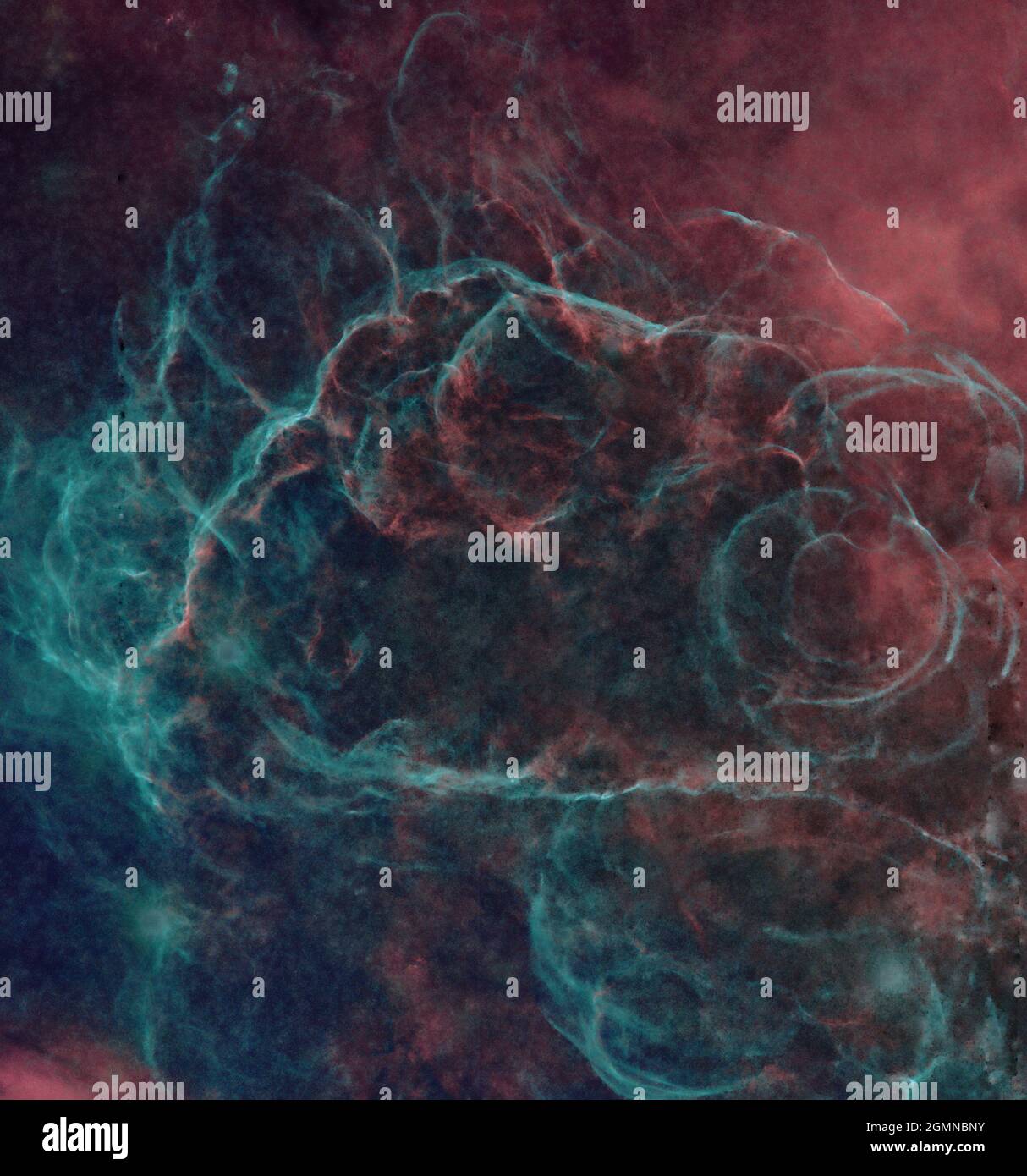 The Vela supernova remnant is a source Type II supernova that exploded approximately 11,000–12,300 years ago. Stock Photohttps://www.alamy.com/image-license-details/?v=1https://www.alamy.com/the-vela-supernova-remnant-is-a-source-type-ii-supernova-that-exploded-approximately-1100012300-years-ago-image443022551.html
The Vela supernova remnant is a source Type II supernova that exploded approximately 11,000–12,300 years ago. Stock Photohttps://www.alamy.com/image-license-details/?v=1https://www.alamy.com/the-vela-supernova-remnant-is-a-source-type-ii-supernova-that-exploded-approximately-1100012300-years-ago-image443022551.htmlRF2GMNBNY–The Vela supernova remnant is a source Type II supernova that exploded approximately 11,000–12,300 years ago.
